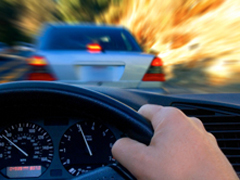Slower Driving Leads to Longer Life Expectancy
Sunnybrook Health Sciences Centre researcher Dr. Donald Redelmeier and colleagues have found that each hour spent driving in North America leads to about a 20 minute loss in life expectancy for the average driver due to the risks of a fatal crash. That is, spending about 60 minutes in a car costs about 80 minutes in total for the average driver as time gone from the person's life.
"When drivers try to speed to get to their destination faster," says Redelmeier, lead investigator of the study and staff physician at Sunnybrook Health Sciences Centre, "they actually lose more time because the savings from faster travel are offset by the increased prospect of a crash." The estimates suggest that slowing down slightly by about 3 km/h would cost average drivers about three minutes daily in trip time but save them about three hours annually in overall survival.
The study was based on a combination of computerized traffic modeling, national statistics covering driving on public roadways, and the laws of physics. The computer models calculated average distances and time drivers in the United States travel daily, the number of annual crashes categorized as fatal, injurious and property damage, and the expected time losses due to crashing at different severities.
"The study suggests that small changes can have large consequences so that, at a population level, such changes would translate to approximately 3 million fewer property damage crashes, 1 million fewer injurious crashes, and 9,000 fewer fatalities each year in the United States," says Redelmeier, who is also a professor of medicine at the University of Toronto.
"The savings may be especially large for young drivers," he adds
These findings mean that on the whole, drivers in the United States go slightly too fast and could improve overall life expectancy by decreasing their average speed slightly, and that efforts to reduce speeding, like photo-radar, traffic calming programs, and street racing crack-downs merit more attention.
PDF / View full media release »


